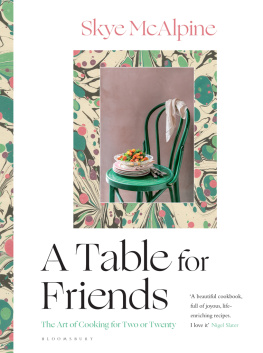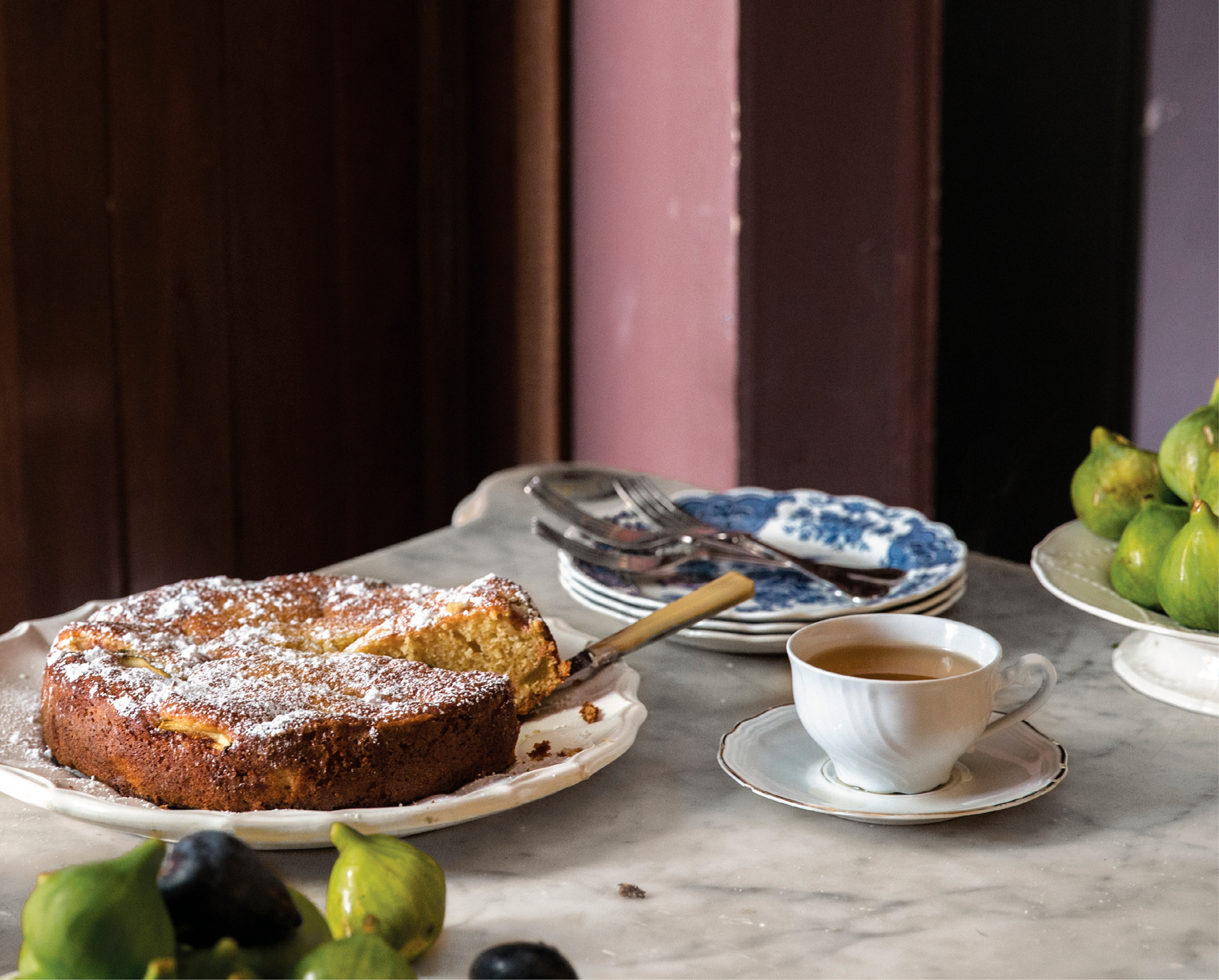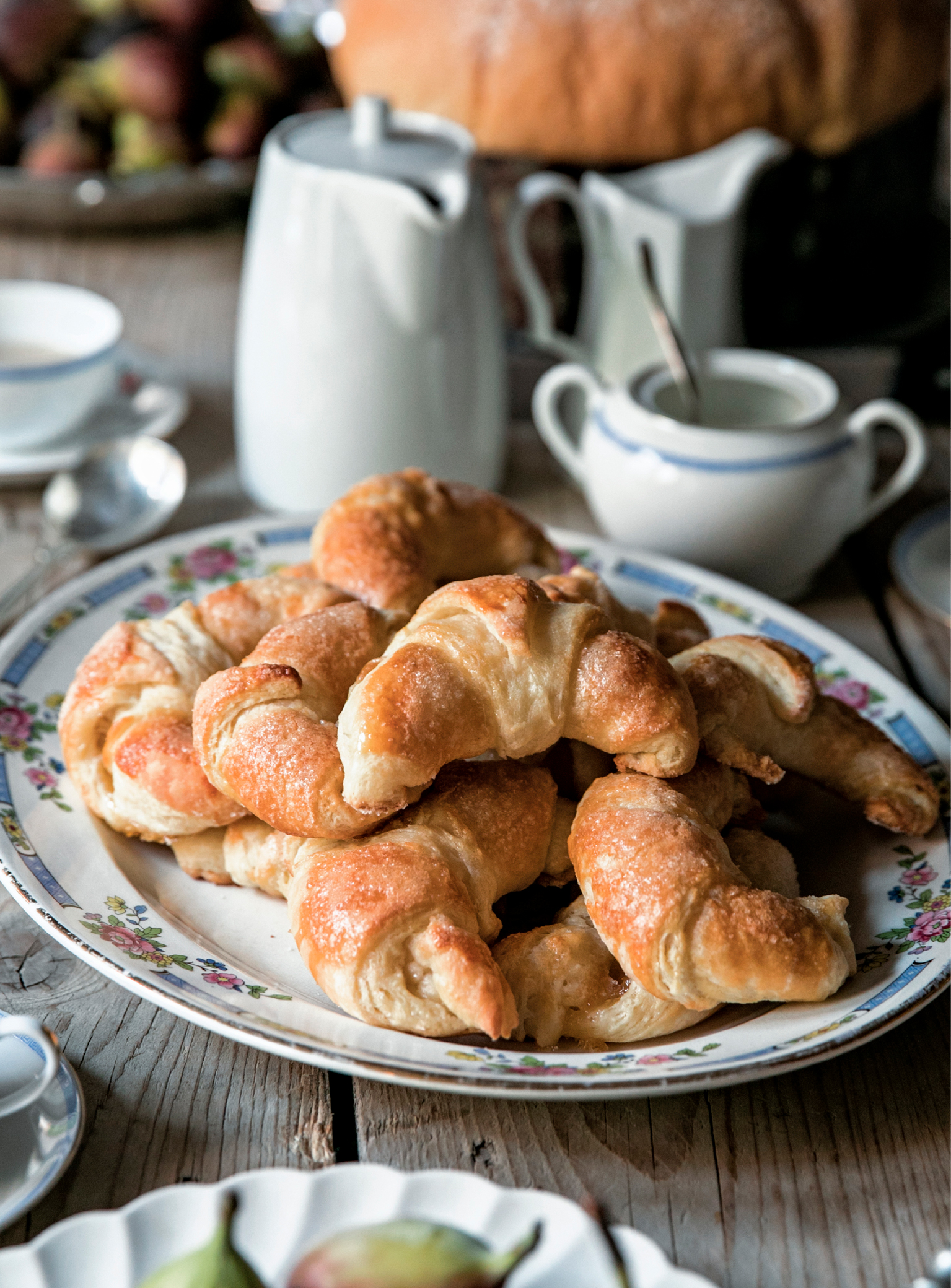To my husband, Anthonyfor greedily and cheerfully devouring the food I cook, and for always inspiring me to chase after my dreams. You are my everything.
To my Mamafor ignoring the chaos in the kitchen and for cheering me on tirelessly as this book came together.
To Wendyfor teaching me not just how to cook, but how to love to cook.
To Charlie and Edfor believing in me.
To Dorisfor your warmth, generosity, and patience in bringing this book about. To Amanda and Ashleyfor helping me find the words to tell the story I had long dreamed of telling. To Marysarahfor bringing this book to life with your beautiful design. And to Carly and Natashafor making it such fun to work together.
To Dalim and Annafor all your help in the kitchen. Without you, this book wouldnt exist.
To Poppyfor your help magicking my scribbles and notes into recipes.
To Jofor being endlessly generous with your time, your wise advice, and above all, your thoughtful encouragement.
To Carolinefor helping me to make sense of my own thoughts, and for patiently casting your stylish eye over each and every iteration of this book, from rough notes to first draft to the real thing.
Breakfast in Venice almost doesnt seem like breakfast at all. Something sweetwarm pastries, polenta cookies laced with plump raisins, perhaps a slice of soft cake covered in confectioners sugar or peppered with minced cooked applewashed down with a cup of milky coffee. Its frivolous and extravagant, and while it unabashedly makes no promise of healthfulness, it is an irresistibly fun way to start the day.
My favorite breakfast is what we in Venice call brioche. These are pastries that, confusingly, bear little resemblance to the French brioche and are rather more like croissants made with a dough that is not so flaky and is rather softer and sweeter. And most important, when you break a brioche open, at its center is a sweet fillingapricot jam, most often. Early mornings in Venice, for me, are the scent of freshly baking brioche: in those first hours of the day, it wafts through the streets, as the cafs open their doors readying themselves for the morning breakfast rush and their bakers churn out sweet goods from the ovens.
The coffee shops are busiest at this time. Most Venetians eat breakfast on the go, standing at the bar of a favorite caf, on their way to work, school, the marketwherever the business of the day might be taking them. And while to eat your meal standing up might seem to defy every rule of civilized behavior, there is something convivial about this custom. With your morning coffee and pastry at the bar comes an exchange of nicetiesa catch-up on the weather, on the tides, on the local gossipwith the barista who daily makes your coffee, but also with your neighbors breakfasting alongside you and jostling for a spot to rest their coffee cup (always a proper china cup) at the bar.
This is how I grew up eating breakfast. And still now, most days, we make a point as a family of eating breakfast at the caf. Most days we go to the tiny, bustling, family-run spot just round the corner from our house, the one we have affectionately come to call the Orange Caf. I think we call it that because once upon a time there were a few orange-colored tables in the back room, and while they might have long since been removed, the name has stuck, enshrined in our family lore.
It is perhaps the greatest irony that breakfast is the meal I most rarely cook, yet these recipesbrioche, pastries, sweet biscuits, cakes, and so forthare the ones I take the greatest pleasure in making. And so I make them for us to eat at tea or for dessert, just as much as I do for breakfast on those occasions when we dont eat at the bar of the Orange Caf but, rather, leisurely at home around our kitchen table, with the morning papers.
APRICOT BRIOCHE
BRIOCHE ALLA MARMELLATA
As mentioned in the chapter introduction, these are what in Venice we call brioche, a sort of croissant-meets-quickbread with a dollop of apricot jam in the center. The dough is rather like a French brioche, only rolled and folded several times like a croissant, which gives it a lighter, flakier texture than quickbread. The rich, buttery dough requires several risings and so you need to allow a little time to make this recipe. You might even want to leave the dough to rise overnight, and then just roll the brioche and finish them off the next morning. Bear in mind, though, that very little of that time is hands-on; mostly its time for the dough to rest. And if you are truly pressed for time, you could make these with prepared puff pastry (see ). The end result wont quite have the same texture, but it will be lovely nonethless.
I have used apricot jam, which is not just convention but also my favorite. There is no reason, though, why you shouldnt try these with strawberry, fig, or black cherry jam; or use a dollop of bitter orange marmalade, honey, or dark chocolate spread, for that matter. The possibilities are endless.
MAKES 6 BRIOCHE
2 cups / 350g bread flour, plus additional for dusting
cup / 40g granulated sugar, plus 1 tablespoon for sprinkling
2 teaspoons / 7g instant yeast
A generous pinch of salt
1 cup (2 sticks) plus 2 tablespoons / 250g cold salted butter
cup / 125ml whole milk, cold
2 large eggs
2 heaping tablespoons apricot jam
Place the flour, sugar, yeast, and salt into a food processor and pulse for a few seconds to combine. Chop the butter into pieces and add to the processor bowl. Process for a few seconds until the mixture has the consistency of coarse sand. Tip the mixture into a medium mixing bowl and set aside.
In a small bowl, whisk together the milk with one of the eggs and 3 tablespoons cold water. Make a well in the center of the flour mixture and pour the milk mixture into it. Stir with a table knife to bring the dough together into a sticky, lumpy mass. Shape the dough into a ball, set it back into the mixing bowl, cover with plastic wrap, and refrigerate for 4 hours or overnight.
Put the dough on a lightly floured work surface and roll it out into a long, thin rectangle roughly 8 by 16 inches (4045cm by 2025cm). Now fold the top third down and the bottom third up, as if you were folding a letter. Give it a quarter turn and roll it out into a long, thin rectangle again. Repeat the rolling, folding and rotating process a further 3 times, then leave the dough to rest on a baking tray, cover with plastic wrap, and leave in the fridge to proof for another 4 hours (or overnight). Try to move as quickly as you can with the dough, handling it as little as possible. If you find it starts to get too warm and sticky, wrap it in plastic wrap and chill in the fridge for a short while before continuing.
On a clean, lightly floured surface, roll out the dough to a long, thin rectangle, roughly inch thick. Cut it into six triangles, roughly 5 inches (12 to 14 cm) wide at the base and 9 inches (24cm) long on the sides. Spoon 1 teaspoon of apricot jam onto the base of each triangle, centered and about two fingers width away from the edges. Resist the urge to overfill here; you really just need a teaspoon or the jam will spill out of the brioche as it cooks. Fold the bottom edge of the triangle over the jam, trying to tuck it under, and roll the pastry up as tightly as you can, stretching the triangle over so its tip is tucked under the body of the croissant shape. Gently fold the tips of the pastry into the horns of a croissant, pinching the pastry where needed to seal. Repeat this with the remaining triangles.








![Bosworth - Italian Venice: a history[Electronic book]](/uploads/posts/book/194557/thumbs/bosworth-italian-venice-a-history-electronic.jpg)







